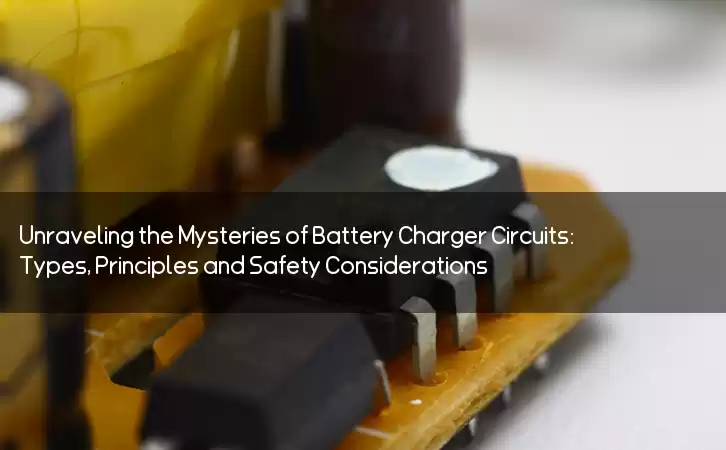Information Center
Unraveling the Mysteries of Battery Charger Circuits: Types, Principles and Safety Considerations
Published:2023-06-14 20:36:43 Author:Green WCND Views:77Battery Charger Circuit: An Overview A battery charger is a device designed to charge rechargeable batteries. It is an essential component of many electronic devices such as smartphones, laptops, and electric cars. A good battery charger circuit must be efficient, reliable, and safe to use. In this article, we will discuss the principles of a battery charger circuit and the various types of circuits available in the market. Principles of a Battery Charger Circuit The basic principle of a battery charger circuit is to convert the alternating current (AC) from the power source to direct current (DC) that can be used to charge the battery. The charger must sense the state of the battery and regulate the charging current accordingly. There are three stages of battery charging: bulk, absorption, and float. The bulk stage provides a large current to the battery, typically between 20% to 80% of its capacity, to quickly charge it. In the absorption stage, the charging current is slowly reduced to avoid overcharging the battery. Finally, the float stage maintains a small current to keep the battery fully charged without damaging it. To achieve these stages, the charger circuit uses a combination of different components such as diodes, transistors, resistors, capacitors, and inductors. Types of Battery Charger Circuit There are several types of battery charger circuits available in the market. The most common ones are: 1. Linear Charger Circuit The linear charger circuit is the simplest and most cost-effective circuit. It uses a linear regulator to control the charging current and voltage. The regulator drops the voltage from the power source to match the battery’s voltage. However, it is not very efficient, and the excess heat generated can damage the battery. 2. Switch-Mode Charger Circuit The switch-mode charger circuit is more complex than the linear circuit, but it is also more efficient. It uses a switching regulator to control the charging current and voltage. The regulator switches the input voltage on and off to achieve the desired charging voltage. This circuit is commonly used in high-end electronic devices such as laptops and electric cars. 3. Pulse Charger Circuit The pulse charger circuit uses short bursts of high current to charge the battery. This method is more efficient and can charge the battery faster than other circuits. However, it requires more sophisticated circuitry and may not be suitable for all types of batteries. Safety Considerations Using a battery charger circuit can be dangerous if not done properly. It is essential to follow the safety guidelines provided by the manufacturer and ensure that the charger is compatible with the battery. Overcharging or undercharging the battery can cause it to explode or leak, damaging the device and posing a hazard to the user. It is also important to choose a charger that has safety features such as overvoltage protection, short circuit protection, and temperature control. Conclusion A battery charger circuit is an essential component of many electronic devices. It is important to choose the right type of charger circuit based on the battery type and charging requirements. Safety considerations must be taken into account when using a battery charger circuit. With proper usage, a battery charger circuit can ensure the longevity and performance of the battery and the device it powers.

Power Adapter Design and Customization Guide for Portable Electric KettlesI. Common Design Types for Portable Electric Kettle Power AdaptersPortable electric ke···
I. Common Design Types of Power Adapters External Independent Type (Most Common) Design: A standalone adapter (e.g., "black brick") connected to the p···
Handheld Vacuum Cleaner Power Adapter Selection GuideIntroductionHandheld vacuum cleaners have become a mainstream tool for household cleaning due to their port···
Drill Power Adapter Selection Guide.drill-container { font-family: Arial, sans-serif; line-height: 1.6; max-width: 800px; margin: 0 auto; padding: 20px; } .dril···





